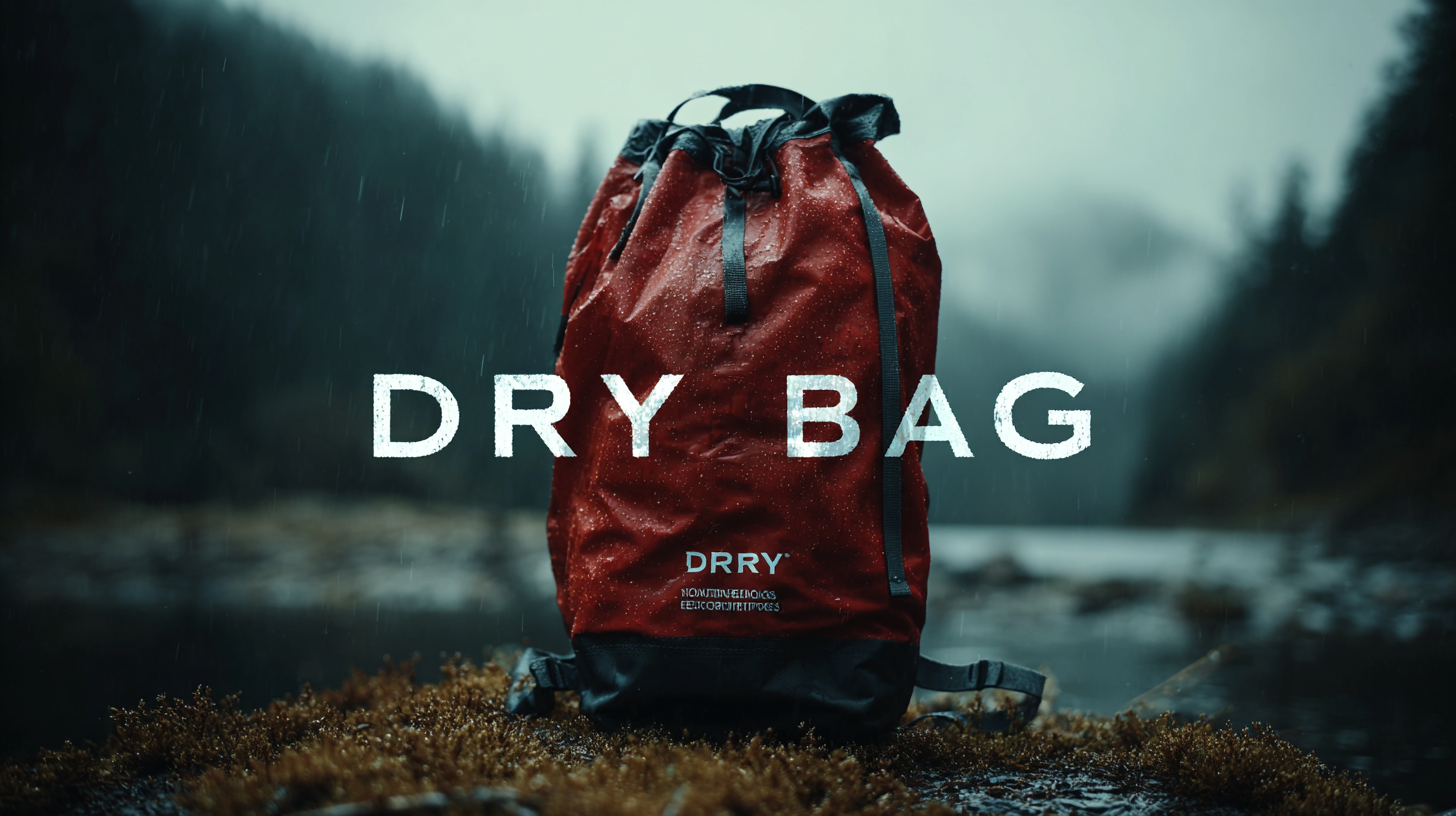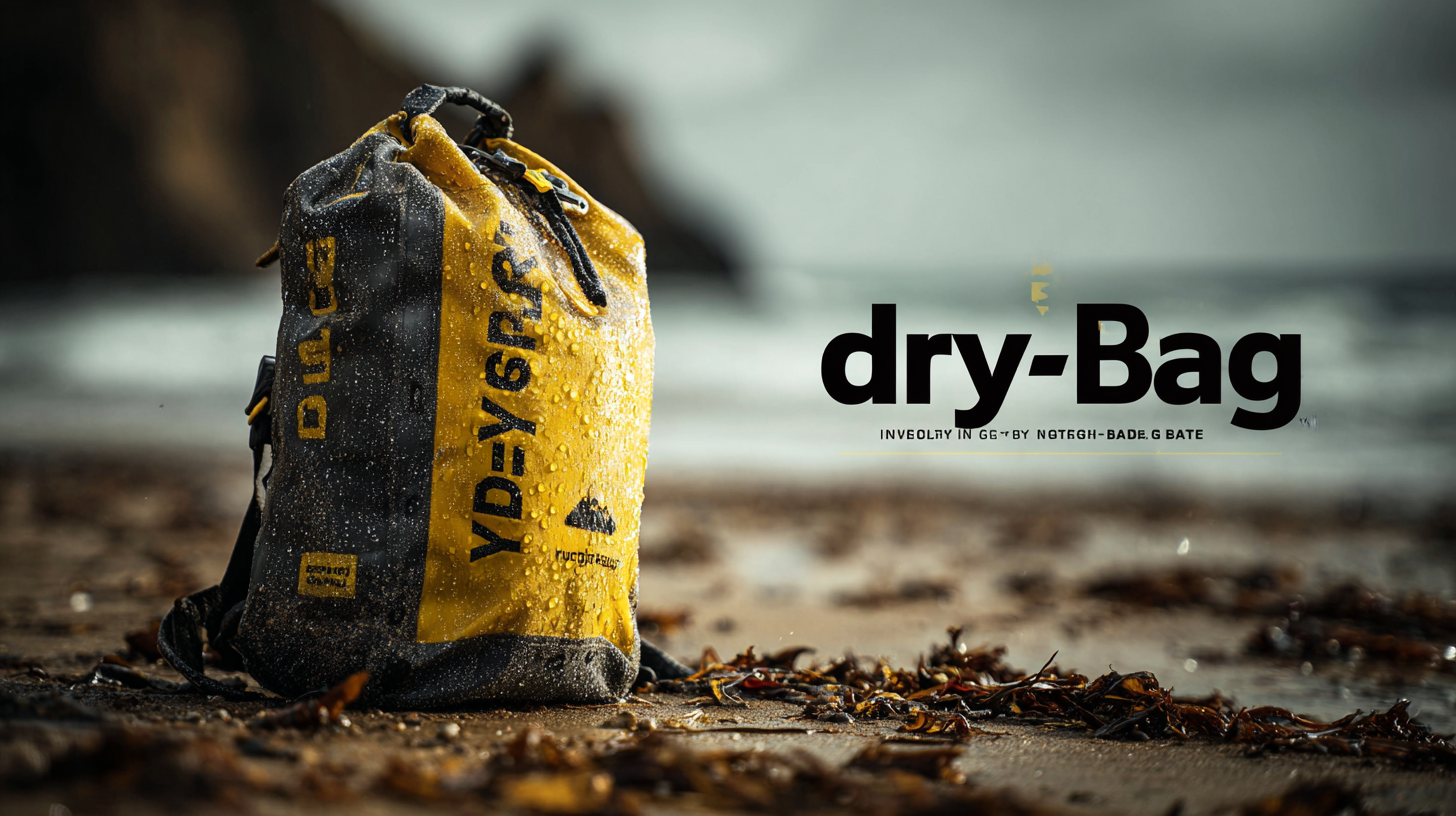2025 Industry Innovations: The Ultimate Guide to Choosing the Best Dry Bag for Global Buyers
As the outdoor recreation industry continues to expand, the demand for high-quality gear, including dry bags, is at an all-time high. According to a recent market analysis report by Grand View Research, the global dry bags market is projected to witness significant growth, reaching USD 174.3 million by 2025, driven by increasing participation in water sports and adventure travel. However, with such a plethora of options available, global buyers often face challenges in selecting the best dry bag to suit their specific needs. Issues such as material durability, waterproof ratings, and size versatility can make the decision-making process overwhelming. This ultimate guide aims to help buyers navigate the complexities of choosing the perfect dry bag, ensuring their outdoor adventures remain enjoyable and worry-free, regardless of the conditions they encounter.
Understanding the Different Types of Dry Bags Available in 2025
When exploring the different types of dry bags available in 2025, it’s important to understand the variety that caters to specific needs. There are three primary categories: lightweight, heavy-duty, and specialized dry bags. Lightweight options are perfect for casual day trips where compact size and portability are key. Heavy-duty bags, with reinforced features, are designed for rugged adventures, ensuring your gear remains protected in extreme conditions. Specialized bags, like those with integrated compartments or waterproof pouches, offer added functionality for specific activities such as kayaking or camping.
Tips for choosing the right dry bag include considering the material and closure system. Look for bags made from durable, waterproof materials such as nylon or PVC, which can withstand abrasions and punctures. Additionally, pay attention to the closure mechanism; roll-top closures provide an excellent seal against water intrusion, while zippered bags may offer easier access at the cost of some waterproofing. Always assess the size based on your typical load to avoid overpacking or underutilizing space.
Lastly, checking for additional features like attachment points, reflective strips, or built-in harnessing systems can enhance the usability of your dry bag for various activities. By keeping these factors in mind, you'll make an informed choice that suits your adventures in 2025 and beyond.
2025 Industry Innovations: The Ultimate Guide to Choosing the Best Dry Bag for Global Buyers
| Type of Dry Bag |
Material |
Capacity (Liters) |
Water Resistance Rating |
Best Use |
| Standard Dry Bag |
PVC |
5-20 |
IPX6 |
Boating, Kayaking |
| Roll Top Dry Bag |
Thermoplastic Polyurethane |
10-30 |
IPX7 |
Camping, Hiking |
| Waterproof Backpack |
Nylon with TPU Coating |
20-40 |
IPX8 |
Travel, Daily Use |
| Dry Bag with Compression Straps |
Ripstop Nylon |
10-50 |
IPX6 |
Extreme Sports, Travel |
| Foldable Dry Bag |
Silicone Coated Fabric |
5-15 |
IPX7 |
Lightweight Hiking, Kayaking |
Key Features to Consider When Selecting a Dry Bag for Your Needs
When selecting the ideal dry bag, there are several key features that should be at the forefront of your decision-making process. Firstly, the waterproofness of the bag is paramount. Look for dry bags made from high-quality, durable materials such as TPU or PVC, and check the IP rating if applicable. A bag with a roll-top closure design can enhance waterproof characteristics, ensuring that your belongings stay dry even in challenging environments.
Another critical aspect to consider is the size and capacity of the dry bag. Assess your needs based on the type and duration of activities you will engage in, such as kayaking, hiking, or camping. It’s essential to strike a balance between having enough space for your gear and a manageable weight for transport.
Lastly, additional features can enhance usability, such as external pockets for easy access to items, padded straps for comfort during long treks, and reflective elements for visibility. Choosing a dry bag with these practical features can elevate your outdoor experience, giving you peace of mind while you explore. Remember, the right dry bag can be a game-changer in keeping your gear safe and dry as you venture into the great outdoors.
Material Comparison: Which Dry Bag Fabrics Offer the Best Durability?
When selecting the best dry bag for your adventures, the choice of material is crucial in determining its durability and functionality. Different fabrics offer varying levels of water resistance and wear-and-tear resilience. Nylon is a popular choice due to its lightweight nature and excellent strength, often treated with a waterproof coating that enhances its waterproof capabilities. However, the durability of nylon can vary based on its denier, so look for higher denier fabrics for added toughness.
Another noteworthy material is PVC, which is known for being exceptionally water-resistant and durable, making it ideal for heavy-duty use. While it may not be as lightweight as nylon, its ability to withstand intense conditions often outweighs this drawback. Additionally, TPU (thermoplastic polyurethane) has emerged as a strong contender, offering flexibility, resistance to abrasions, and superior waterproofing qualities. TPU dry bags are perfect for outdoor enthusiasts seeking a lightweight yet robust solution that can handle rugged environments. Choosing the right fabric tailored to your needs will ensure that you invest in a dry bag that lasts through countless adventures.
2025 Industry Innovations: Dry Bag Fabric Durability Comparison
Assessing Size and Capacity: Finding the Perfect Fit for Your Adventures
When embarking on outdoor adventures, selecting the right dry bag can significantly impact your experience, especially regarding size and capacity. A dry bag that is too small may leave you struggling to fit essential gear, while an excessively large bag can be cumbersome and unwieldy. To find the perfect fit, first assess the type of activities you'll be engaging in. For day hikes or kayaking, a compact bag ranging from 10 to 20 liters is often sufficient. However, for multi-day excursions or extended camping trips, consider larger options in the 30 to 70-liter range.

Another crucial aspect to consider is the bag's intended use. For instance, if you're planning a water sports adventure, opting for a durable, waterproof dry bag made from high-quality material is essential. Ensure that the bag features a roll-top closure for maximum water protection and is equipped with adjustable straps for comfort during transport. Additionally, think about the organizational features you might need, such as exterior pockets for easy access to smaller items. By carefully evaluating these factors, you'll find the dry bag that aligns perfectly with your adventures and keeps your gear safe and dry.
Eco-Friendly Innovations in Dry Bag Production for Global Buyers
As sustainability becomes increasingly important in consumer choices, the dry bag industry is stepping up its commitment to eco-friendly innovations. Manufacturers are now utilizing recycled materials and sustainable production methods, significantly reducing their carbon footprints. For instance, some brands are experimenting with biodegradable fabrics and eco-conscious manufacturing processes, ensuring that the bags are both durable and environmentally friendly. This not only helps minimize waste but also caters to a growing segment of environmentally conscious consumers.

In addition to sustainable materials, innovations like water and chemical-resistant treatments derived from natural sources are gaining traction. These advancements not only enhance the functionality of dry bags but also align with the values of global buyers who prioritize eco-friendly products. As the industry evolves, companies are increasingly transparent about their sourcing and production methods, allowing consumers to make informed choices. For those looking to invest in reliable dry bags, considering eco-friendly options can support a sustainable future while enjoying high-performance gear.




